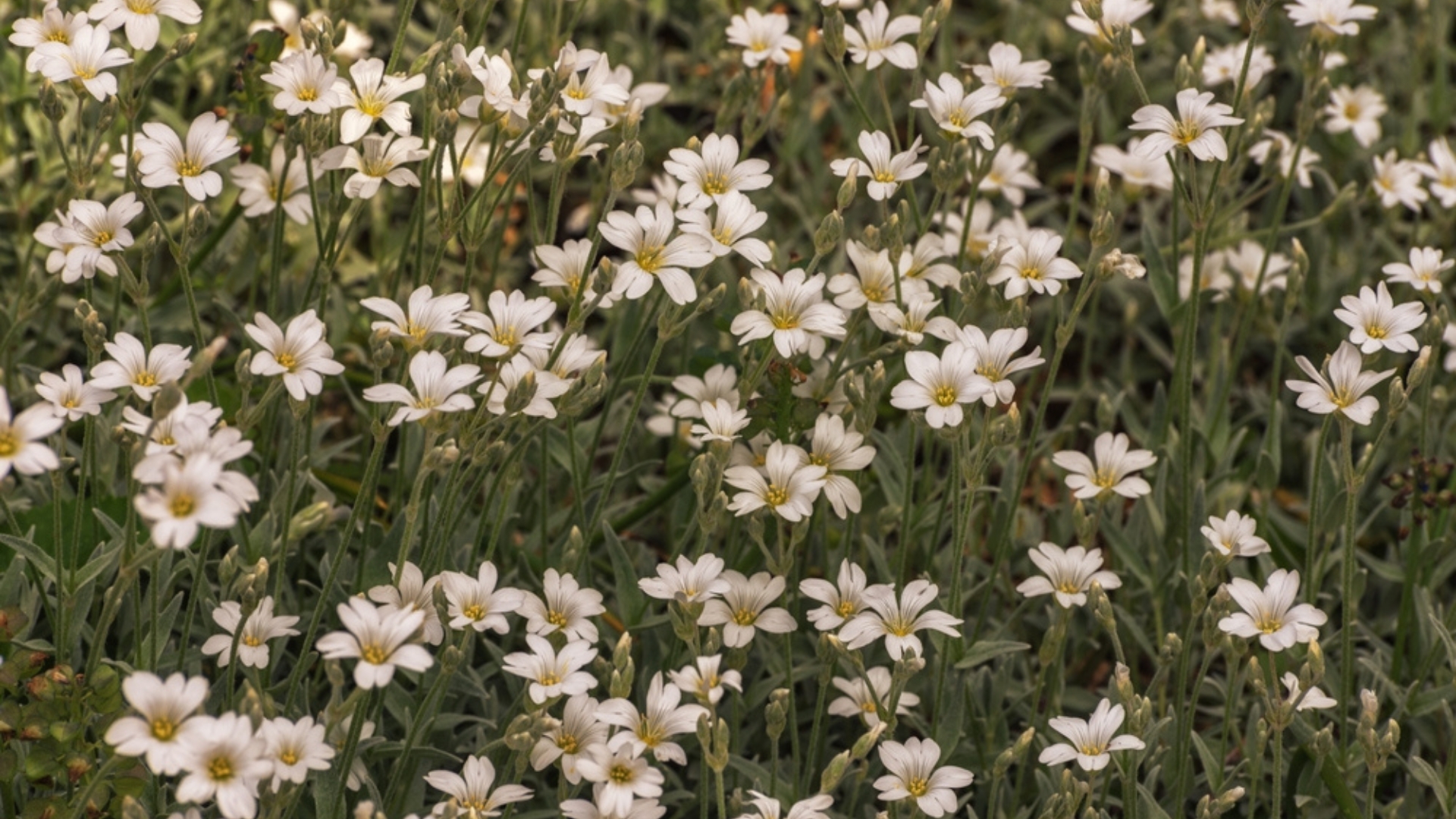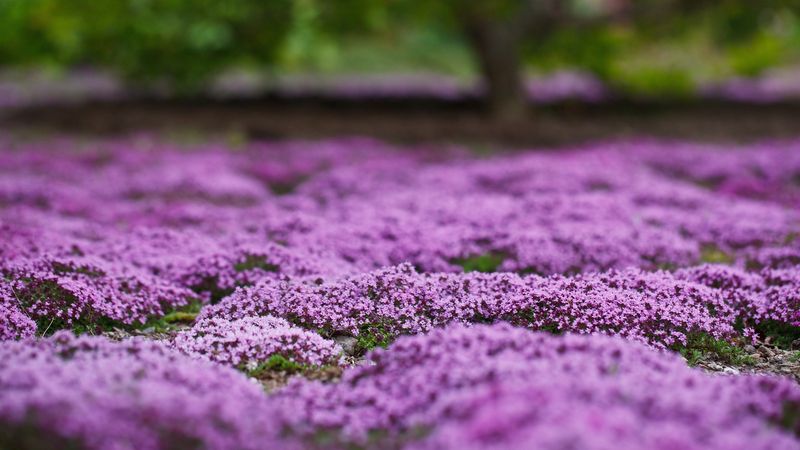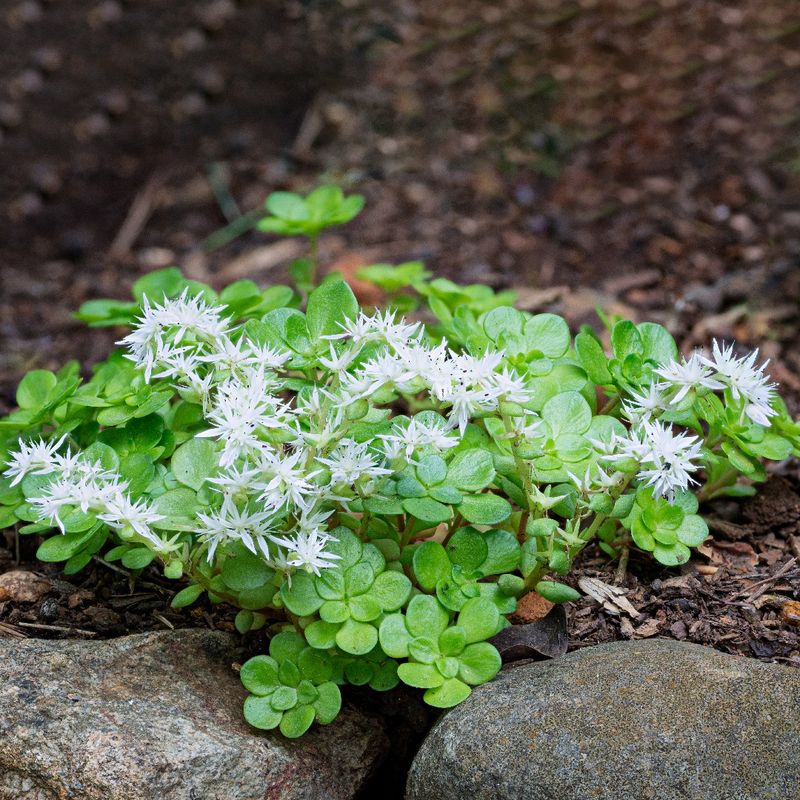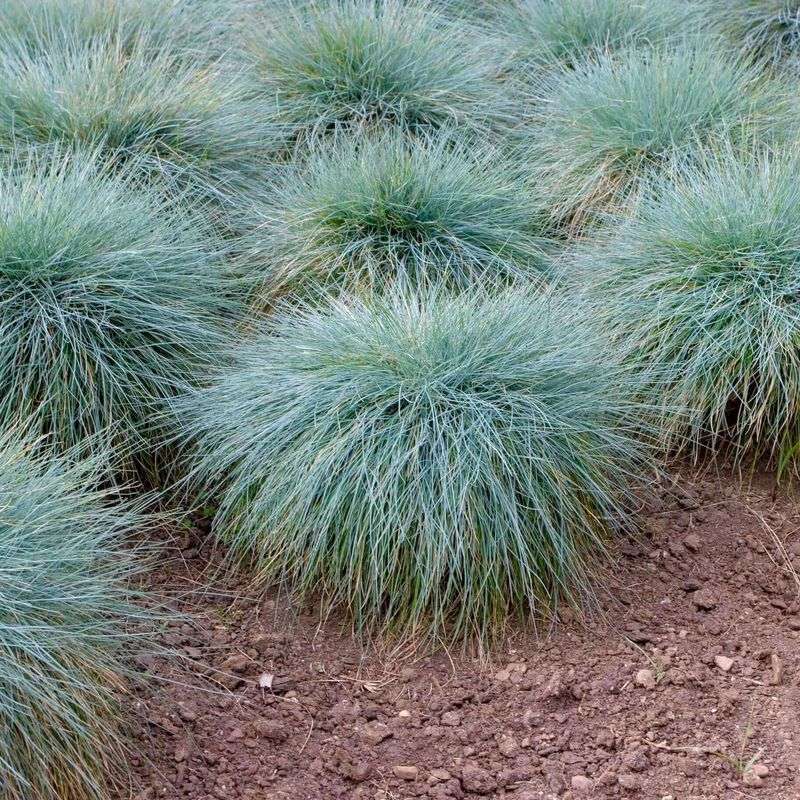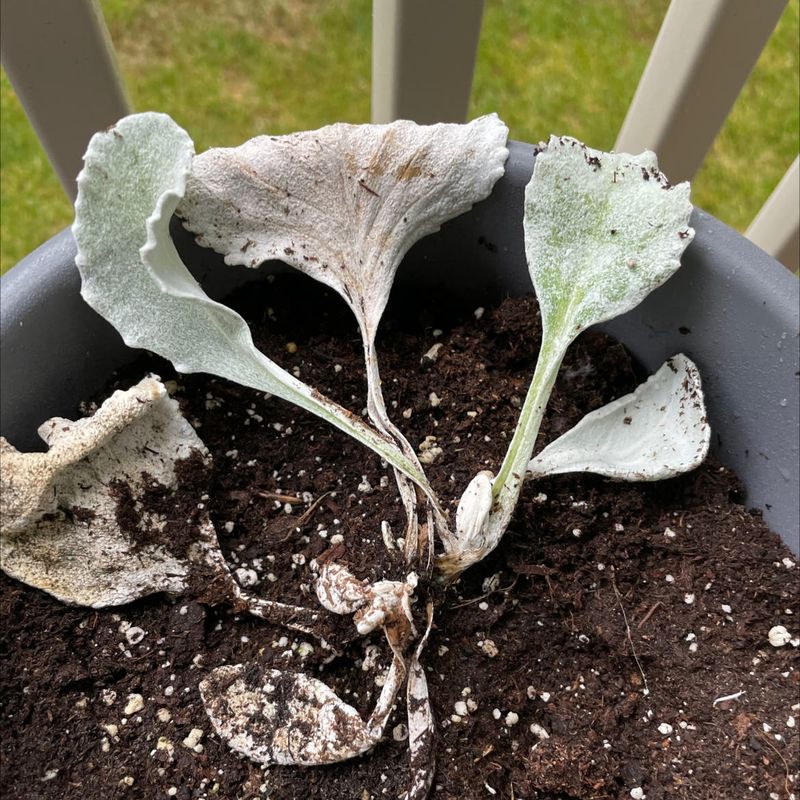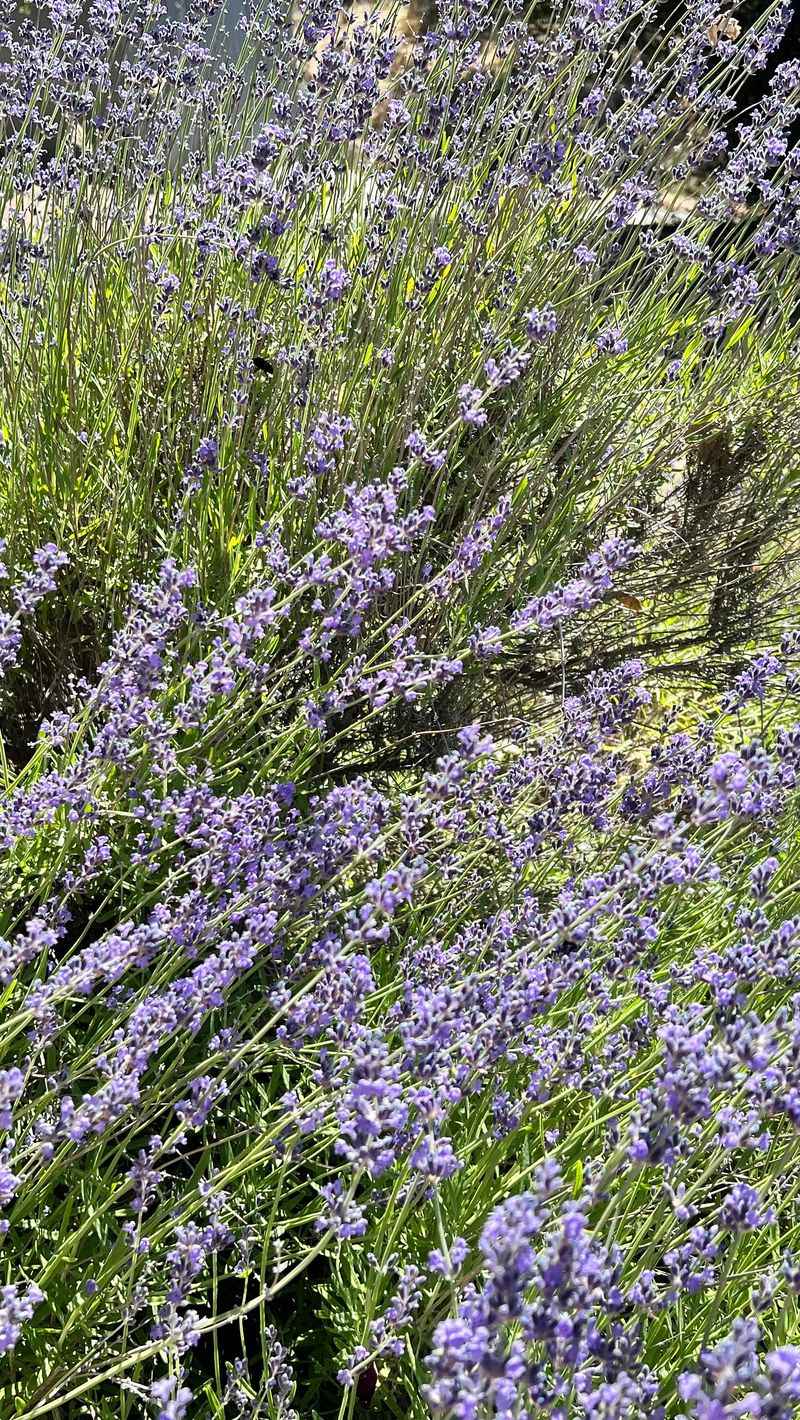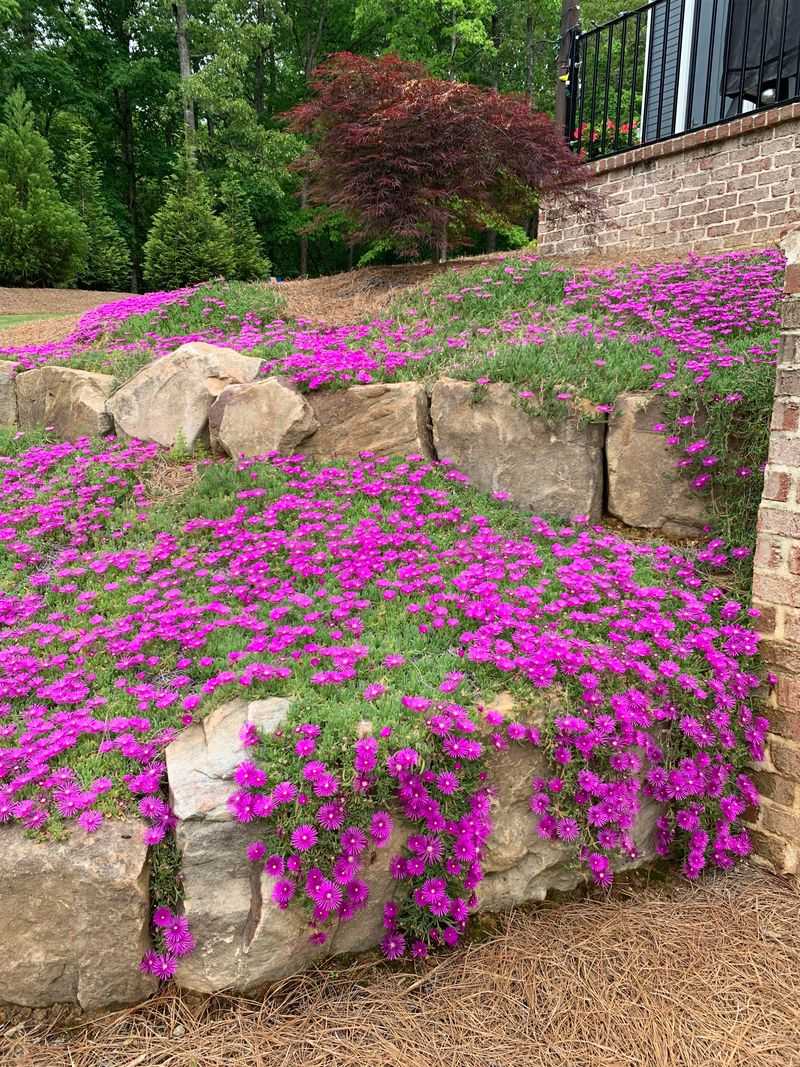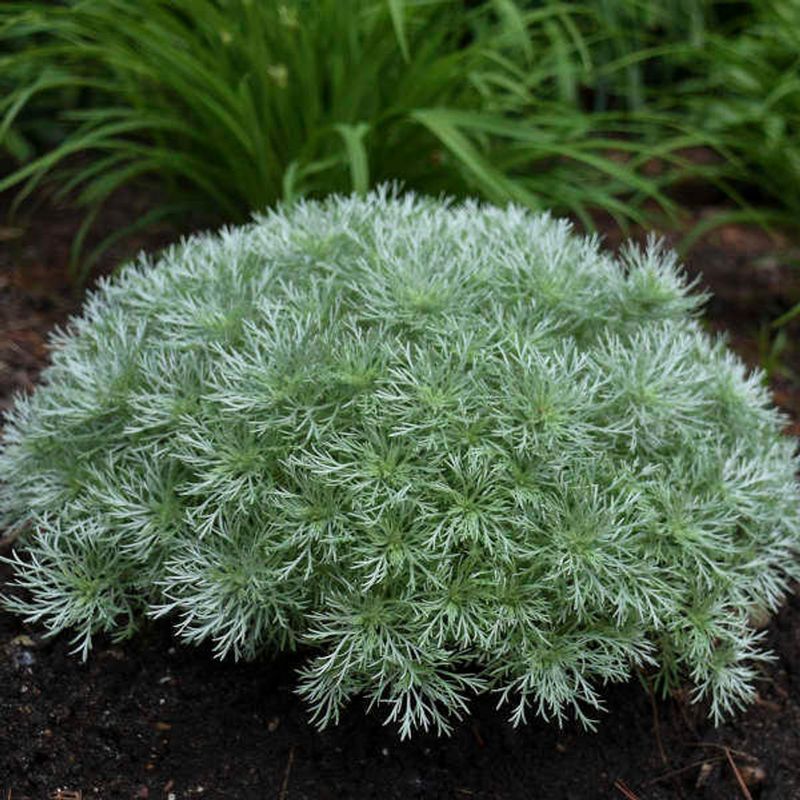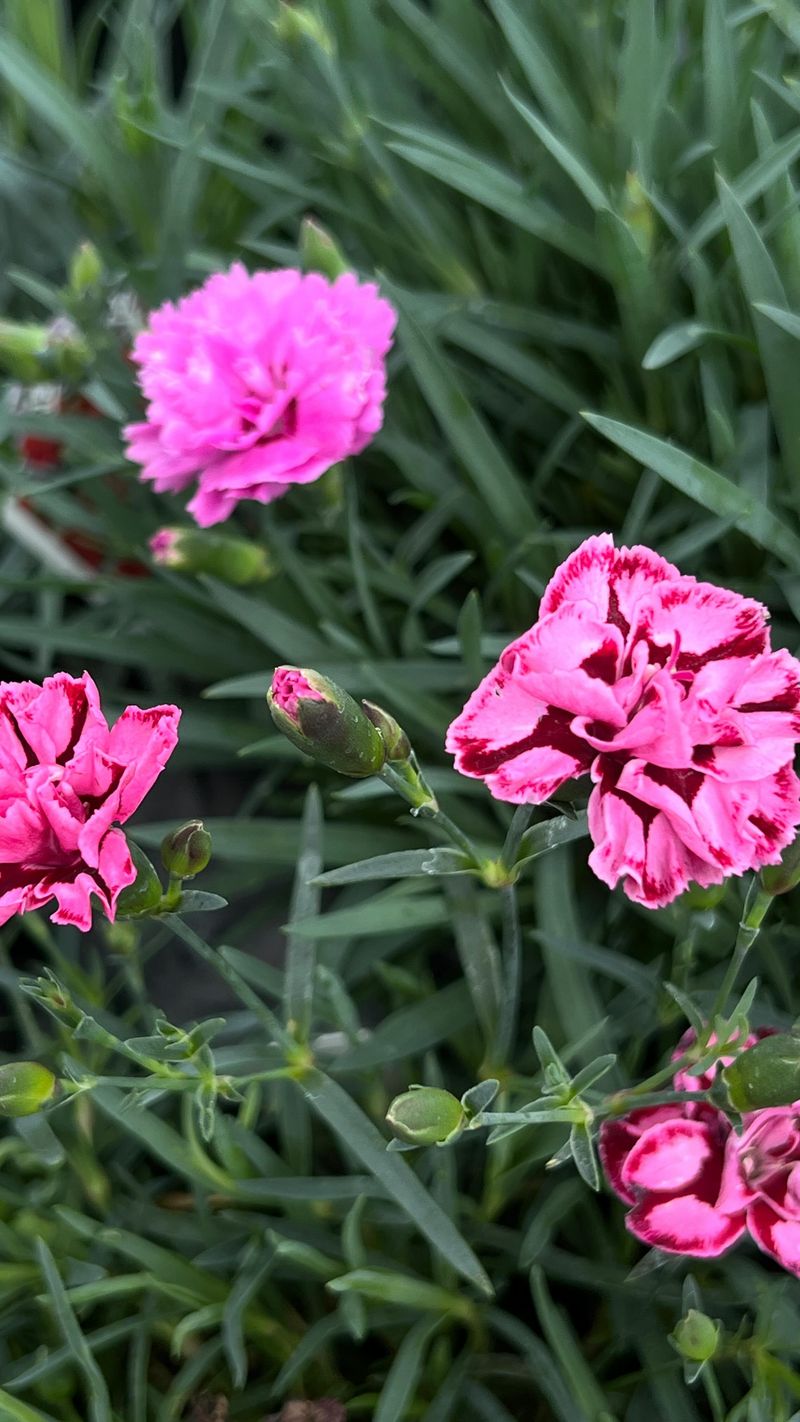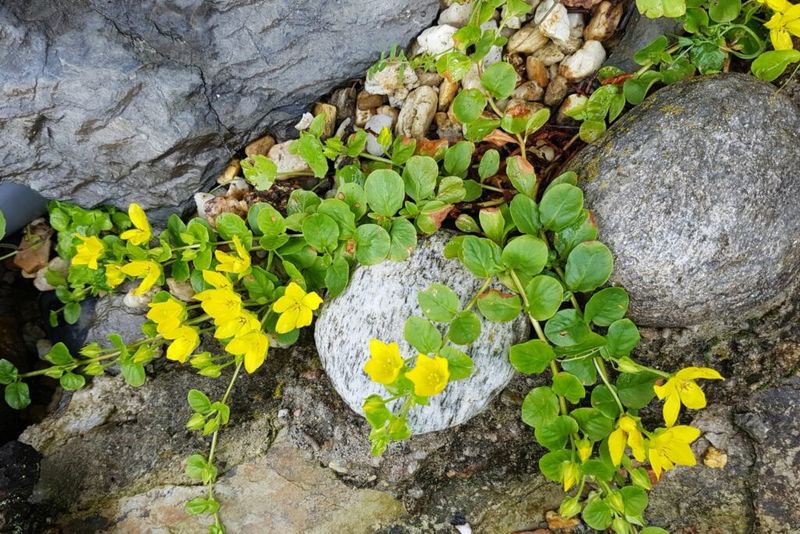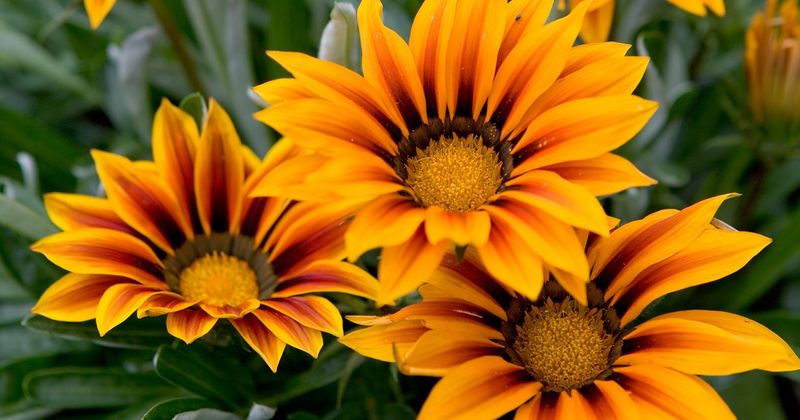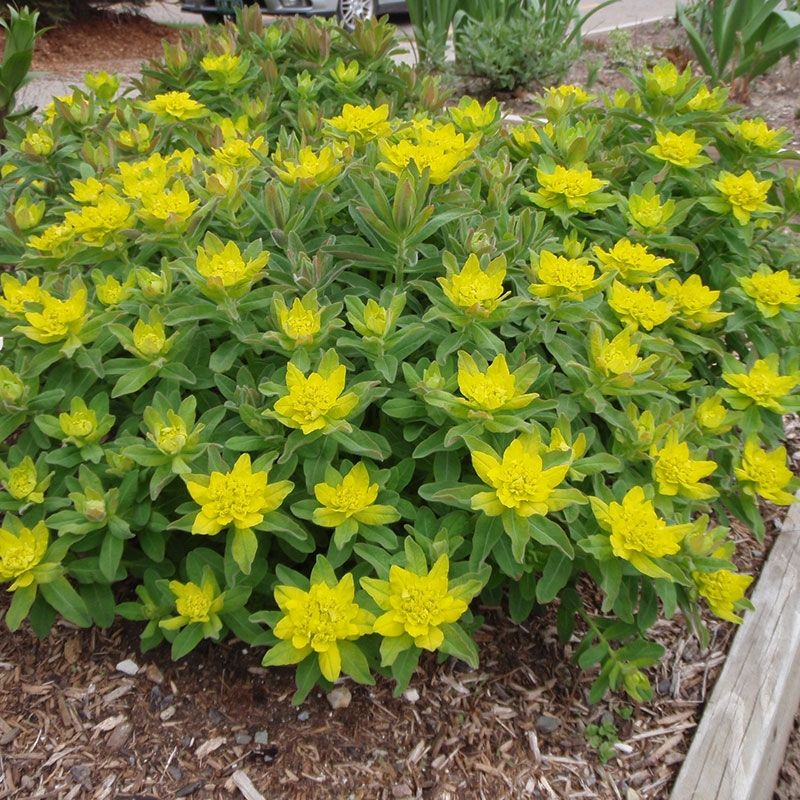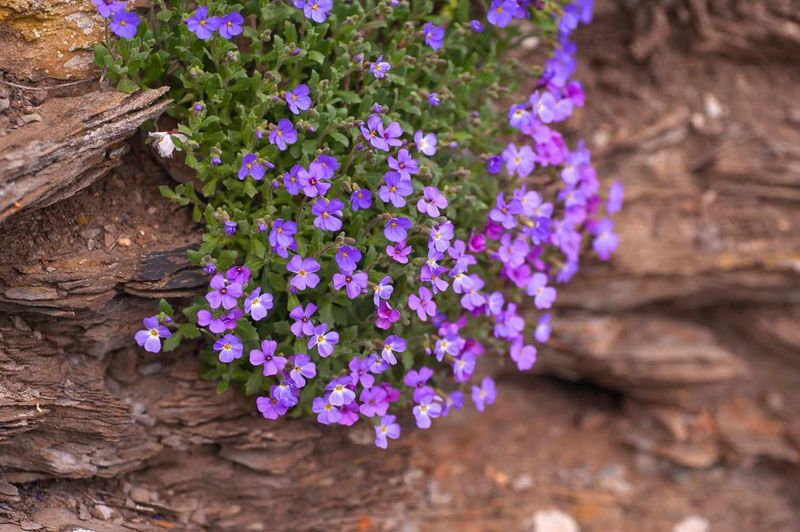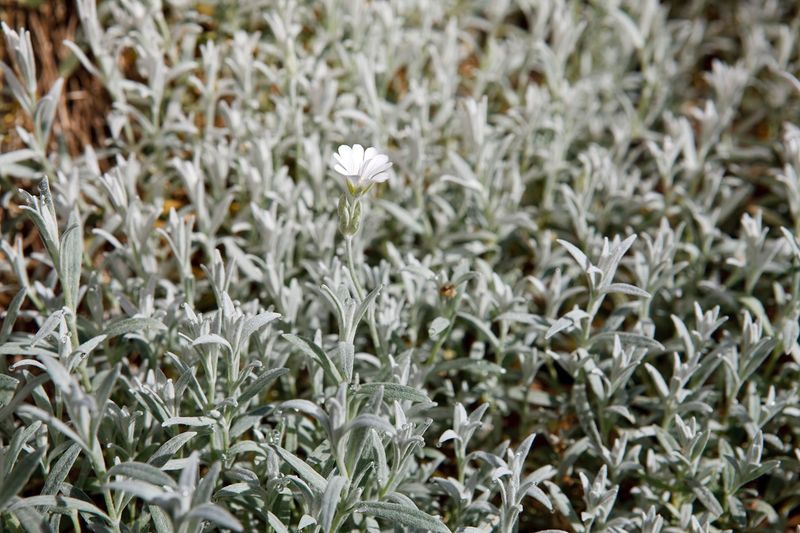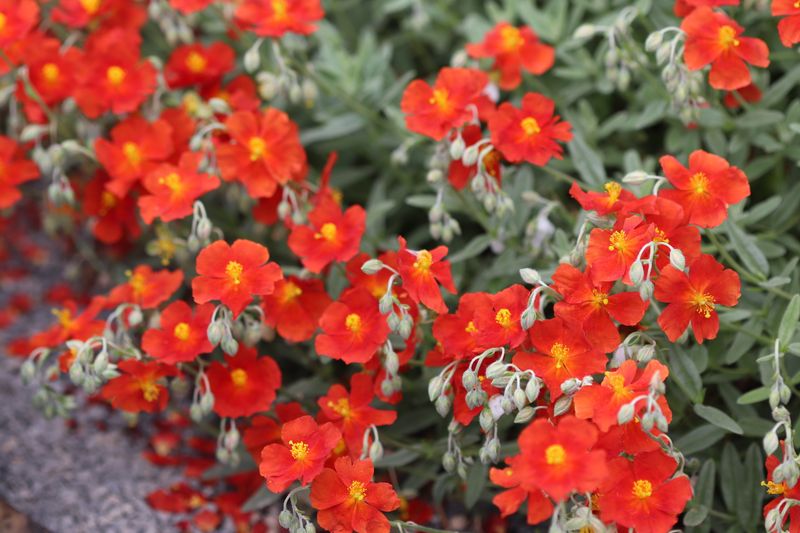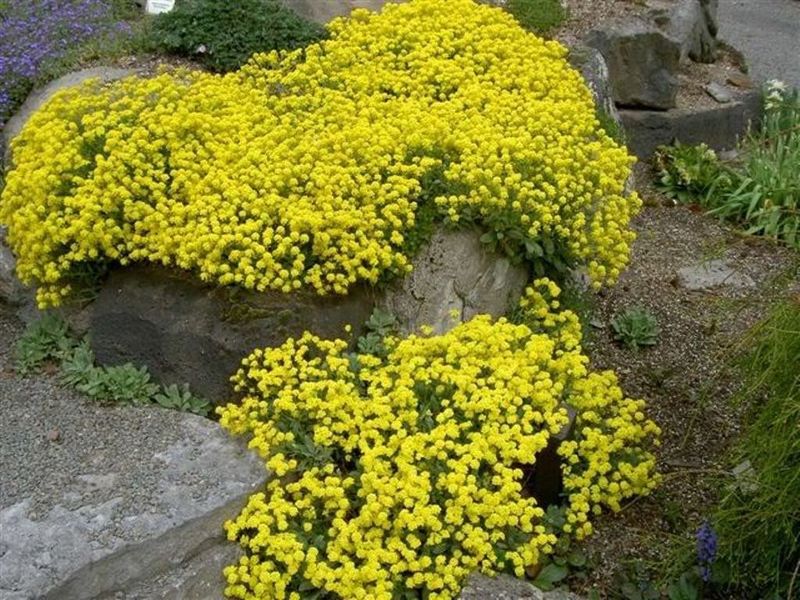All that glitters isn’t green—at least not in the shade. Some ground covers may shine in the spotlight but fall flat when the sun takes a back seat. If you’ve been barking up the wrong tree with struggling plants, it’s time to weed out the weak.
Here are 17 crowd favorites that just don’t cut it in shady spots—and what to grow instead for lush, low-light success.
1. Creeping Thyme
Sun-loving creeping thyme simply refuses to thrive in shady conditions. The plant’s signature fragrant oils and vibrant flowers need direct sunlight to develop properly.
Without adequate light, you’ll notice sparse growth, fewer blooms, and a generally unhappy plant. The dense mat-like coverage that makes thyme so popular in sunny spots becomes patchy and thin in shade.
The plant might survive briefly but will gradually decline, leaving bare patches vulnerable to weeds.
2. Sedum (Stonecrop)
Renowned for drought tolerance and easy care, sedum varieties disappoint when planted in shade. Their succulent leaves stretch awkwardly toward any available light, creating lanky, unattractive growth patterns.
The signature vibrant colors fade to pale, washed-out versions of themselves. Even worse, shade-grown sedums become susceptible to rot and fungal issues due to retained moisture.
While a few hours of morning sun might sustain them, deep shade transforms these normally carefree plants into high-maintenance disappointments.
3. Blue Fescue Grass
Blue fescue’s signature silvery-blue color fades dramatically when grown in shade. The distinctive hue that makes this ornamental grass so desirable simply won’t develop without direct sunlight.
Growth becomes sparse and floppy rather than forming the tight, mounded shape gardeners prize. Without adequate light, blue fescue becomes susceptible to fungal diseases and root rot.
Eventually, plants grown in shade develop unsightly brown patches and may die completely, leaving gaps in your carefully planned ground cover.
4. Lamb’s Ear
The velvety, silver-gray foliage that makes lamb’s ear so touchable loses its magical texture in shade. Without sufficient sunlight, the leaves grow larger but thinner, with less of the fuzzy coating that gives the plant its charm.
Humidity builds up around shade-grown plants, leading to leaf rot and unsightly brown spots. The compact growth habit disappears as stems stretch toward light sources.
While lamb’s ear might survive in partial shade, deep shade transforms this normally drought-tolerant plant into a disease-prone mess.
5. Lavender
Mediterranean lavender craves sunshine and performs miserably in shade. The iconic fragrance that gardeners adore depends on essential oils that develop only with abundant sunlight.
Shade-grown lavender produces fewer flowers and develops a leggy, open habit instead of the tight, mounded form preferred in gardens. Poor air circulation in shady spots increases the risk of fungal diseases that can quickly destroy entire plants.
Even the most shade-tolerant lavender varieties need at least 6 hours of direct sun to look and smell their best.
6. Creeping Phlox
Spring gardens burst with color when creeping phlox blooms—unless it’s planted in shade. The spectacular flower display becomes sparse or nonexistent without adequate sunlight, defeating the plant’s primary purpose.
Foliage grows thin and stretched rather than forming the dense mat that suppresses weeds. Shade-grown phlox becomes susceptible to powdery mildew and other fungal problems that damage leaves and reduce vigor.
While a few varieties tolerate partial shade, most creeping phlox varieties need full sun to form the carpet of color gardeners desire.
7. Ice Plant
Dazzling in sunny rock gardens, ice plant (Delosperma) becomes a shadow of itself when grown in shade. The succulent foliage stretches awkwardly, creating a sparse, gangly appearance instead of the tight mat that makes it effective as ground cover.
Flower production drops dramatically or stops entirely. Even worse, shade combined with moisture creates perfect conditions for root rot that can quickly kill entire plantings.
Native to sunny South African habitats, ice plant simply lacks the genetic programming to adapt to low-light conditions.
8. Artemisia (Silver Mound)
Silver mound artemisia loses its signature silvery color in shade, reverting to an unremarkable green. The compact, mounded shape that gives this plant its name disappears as stems stretch toward available light.
Humidity trapped by surrounding plants in shady areas leads to fungal problems and leaf dieback. Without intense sunlight, the aromatic oils that give artemisia its distinctive scent and deer resistance diminish significantly.
What should be a carefree, drought-tolerant ground cover becomes high-maintenance and unattractive when denied the sunshine it craves.
9. Dianthus (Pinks)
Dianthus varieties planted in shade produce fewer of their signature spicy-scented flowers. The compact growth habit that makes them excellent ground covers disappears as plants stretch toward light sources.
Foliage loses its blue-green color, becoming a washed-out yellowish green instead. The high humidity common in shady areas creates perfect conditions for fungal diseases that can quickly devastate dianthus plantings.
Even the most shade-tolerant varieties need at least half a day of direct sun to perform well as ground covers.
10. Portulaca (Moss Rose)
Portulaca’s vibrant, rose-like flowers rarely open in shade, eliminating the main reason gardeners choose this ground cover. The succulent foliage becomes thin and stretched rather than forming the dense mat that effectively suppresses weeds.
Without adequate sunlight, plants become susceptible to rot issues that can quickly spread through an entire planting. The drought tolerance that makes portulaca so carefree in sunny spots becomes a liability in shade.
Excess moisture lingers around roots and foliage, creating perfect conditions for fungal problems.
11. Creeping Jenny
Golden creeping Jenny loses its signature bright yellow color in shade, reverting to an unremarkable green that blends into the background. While it may still grow in lower light, the plant becomes leggy with increased spacing between leaves.
This creates a sparse appearance rather than the dense carpet that makes it effective for weed suppression. In deep shade, growth slows significantly, reducing the plant’s ability to fill in areas quickly.
Though often listed as shade-tolerant, creeping Jenny simply isn’t the same eye-catching ground cover without at least morning sun.
12. Gazania
Gazania daisies stubbornly refuse to open their spectacular blooms without direct sunlight. Planting them in shade essentially eliminates their primary ornamental feature, leaving only the silvery foliage visible.
Even the leaves become stretched and pale when light levels are too low. Plants remain dormant rather than spreading to form the colorful ground cover you expected.
Native to sunny South African habitats, gazanias simply lack the genetic adaptations needed to thrive in low-light conditions.
13. Euphorbia (Cushion Spurge)
Cushion spurge varieties lose their compact, mounded shape in shade, developing a stretched, open habit instead. The vibrant flower bracts that create such spectacular spring displays become smaller and less colorful without adequate sunlight.
Growth slows dramatically, preventing plants from forming the dense ground cover needed for weed suppression. Shade combined with poor air circulation creates perfect conditions for fungal issues that can quickly spread through plantings.
Even the most shade-tolerant euphorbia varieties need at least half-day sun to develop their characteristic form and color.
14. Rock Cress (Aubrieta)
Rock cress transforms garden walls and slopes with cascades of purple, pink, or blue flowers—but only when planted in full sun. In shade, flower production drops dramatically, eliminating the main reason gardeners choose this ground cover.
Foliage becomes sparse and stretched rather than forming the dense mat that effectively covers soil. The reduced air circulation in shady locations creates perfect conditions for crown rot that can quickly kill entire plantings.
Even morning shade can significantly reduce rock cress’s performance as a ground cover.
15. Snow-in-Summer
Snow-in-summer’s silver foliage loses its distinctive color in shade, becoming an ordinary green instead. The spectacular white flower display that gives this plant its name becomes sparse or nonexistent without adequate sunlight.
Growth becomes leggy and open rather than forming the dense mat needed for effective weed suppression. High humidity in shady areas creates perfect conditions for fungal diseases that can quickly destroy entire plantings.
Native to sunny Mediterranean regions, snow-in-summer simply lacks the genetic adaptations needed for shade tolerance.
16. Helianthemum (Sun Rose)
The name says it all—sun roses need sun! These Mediterranean natives produce few of their colorful, rose-like flowers when grown in shade. Without adequate light, the normally compact growth habit disappears as stems stretch toward any available sunlight.
Foliage becomes sparse rather than forming the dense, weed-suppressing mat gardeners desire. The drought tolerance that makes sun roses so carefree in the right location becomes a liability in shade.
Excess moisture around roots and foliage creates perfect conditions for rot issues.
17. Basket-of-Gold (Aurinia)
Basket-of-gold alyssum creates spectacular spring displays—but only when planted in full sun. Shade dramatically reduces flower production, eliminating the golden carpet effect that gives this plant its common name.
Foliage becomes stretched and sparse rather than forming the dense mound that effectively covers soil. The drought tolerance that makes basket-of-gold so carefree in sunny rock gardens becomes problematic in shade.
Excess moisture leads to crown rot and fungal issues that can quickly destroy entire plantings.

